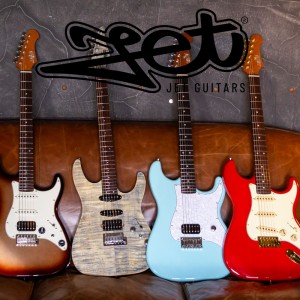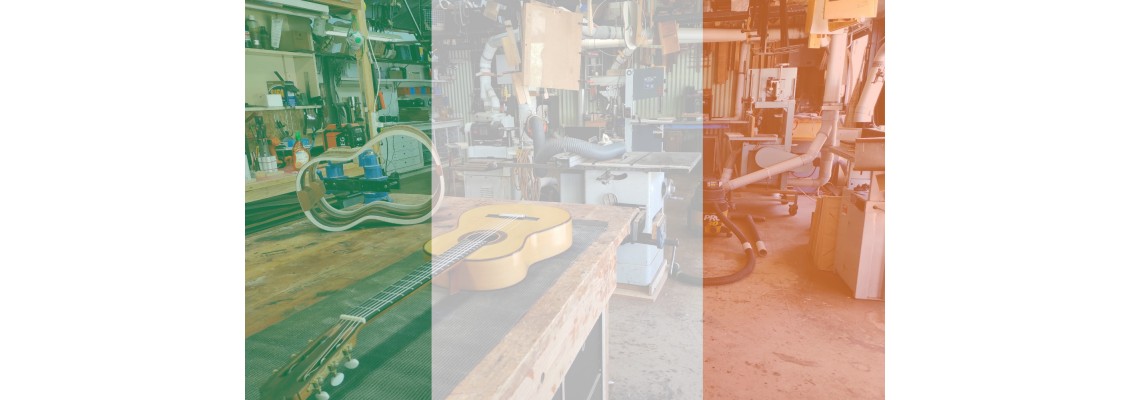
In the heart of Dublin, amidst the bustling streets and vibrant pubs, there lies a lesser-known but equally enchanting world – the world of local instrument makers. These craftsmen and women are not just making instruments; they are weaving the very fabric of Dublin's rich musical tapestry. Let's take a walk through the workshops of a trio of these artisans and discover the soulful art of instrument making in Dublin.
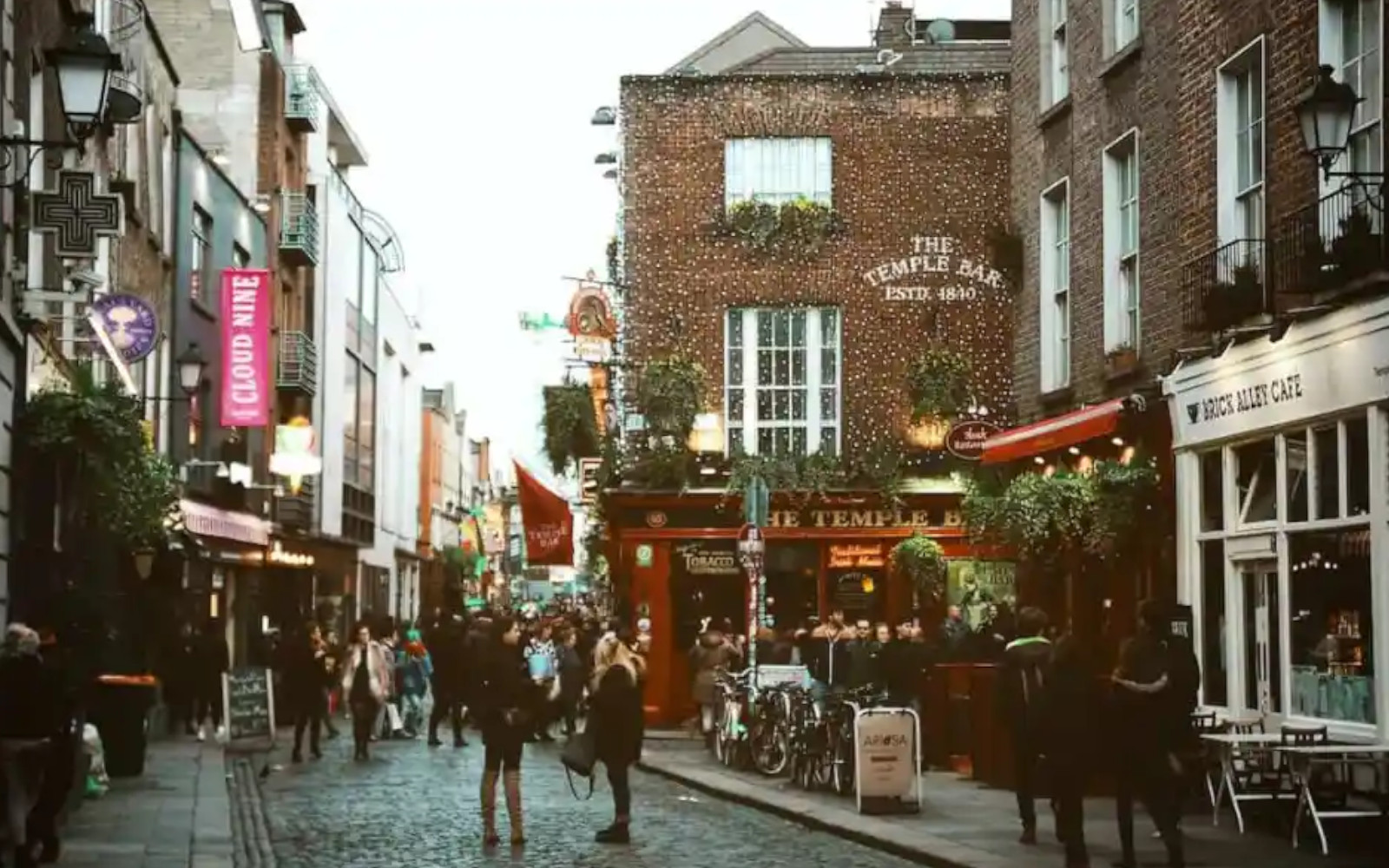
The Art of Guitar Building: The John Moriarty Approach
When it comes to building guitars, John Moriarty adopts a practical and refined approach, ensuring each design remains functional and road-worthy without being over-built. Through meticulous experimentation, Moriarty has perfected the art of making archtop guitars sound fully acoustic, avoiding the familiar 'bark' of poorly voiced instruments. Understanding that most performers use magnetic pickups—which can sound muddy when overloaded with acoustic information—Moriarty often voices his instruments to excel when amplified.
In the realm of repairs and instrument setups, Moriarty employs specific measurements and reference points. The transformation of an instrument after a repair is not the result of a magical touch but rather due to meticulous attention to detail and careful decision-making.
Guitarist and guitar builder John Moriarty is a graduate of the National College Of Art And Design in Dublin, where he studied Visual Communications. His guitar building seamlessly blends his dual passions for visual design and music. Moriarty has played at numerous prestigious events, including the Guinness Jazz Festival, Glasgow Jazz Festival, Euro-Jazz Festival in Mexico City, JJ Smyth’s, and Vicar Street. He has recorded and toured with U.S. pianist Bill Carrothers and performed with Bobby Watson of 'Art Blakey’s Jazz Messengers.' Moriarty has also played numerous guitar duets with fellow Irishman Louis Stewart. His guitars have been showcased at the Healdsburg International Guitar Festival in 2009 in California and more recently at the launch of the Holy Grail Guitar show in Berlin.
Check out Moriarty Guitars HERE.
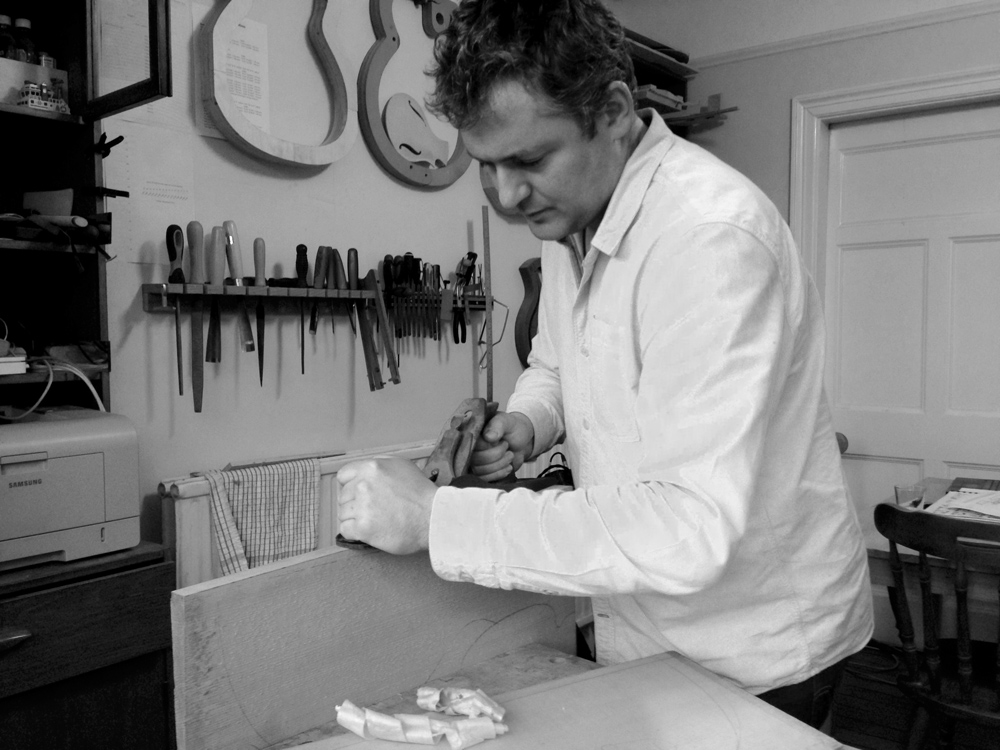
Youenn Bothorel - Renowned Classical Luthier
Youenn Bothorel, a renowned luthier based in Dublin, Ireland, has carved out an illustrious career in the world of string instrument crafting. His deep sensitivity to music and its instruments led him to the prestigious Newark School of Violin Making in England at the age of 19, graduating in 2001. After gaining invaluable experience in workshops around the globe, he settled in Dublin in 2008, dedicating his craft to the creation of exceptional violins, violas, and cellos.
Drawing inspiration from the great masters of classical violin making, Youenn is also invigorated by contemporary advancements in the field. He actively engages with fellow violin makers, participating in numerous workshops and events to share and expand his knowledge. His commitment to understanding and meeting the unique needs of individual musicians is unwavering. As an active member of the CLAC, some of his exquisite instruments are showcased in the CLAC’s permanent exhibition in Paris.
The CLAC (Collectif de Lutherie et Archèterie Contemporaine) champions the vitality of contemporary instrument making and promotes its growth. Members of the CLAC are united by a shared vision of quality and integrity in their art. Youenn's work is predominantly inspired by the great Italian Masters of the 17th and 18th centuries. He meticulously selects materials like Balkan maple and Northern Italian spruce, and employs traditional techniques, tools, and varnishes such as linseed oil, resins, and madder lake to create unique masterpieces that truly come alive in the hands of musicians.
Music is at the heart of Youenn's creative process, guiding his choices and fueling his inspiration. A pivotal moment in his career was meeting esteemed luthiers Frank Ravatin (Vannes, France) and Francis Kuttner (Cremona, Italy), who generously imparted their knowledge, significantly shaping his approach to violin making.
Check out Youenn Bothorel Instruments HERE.
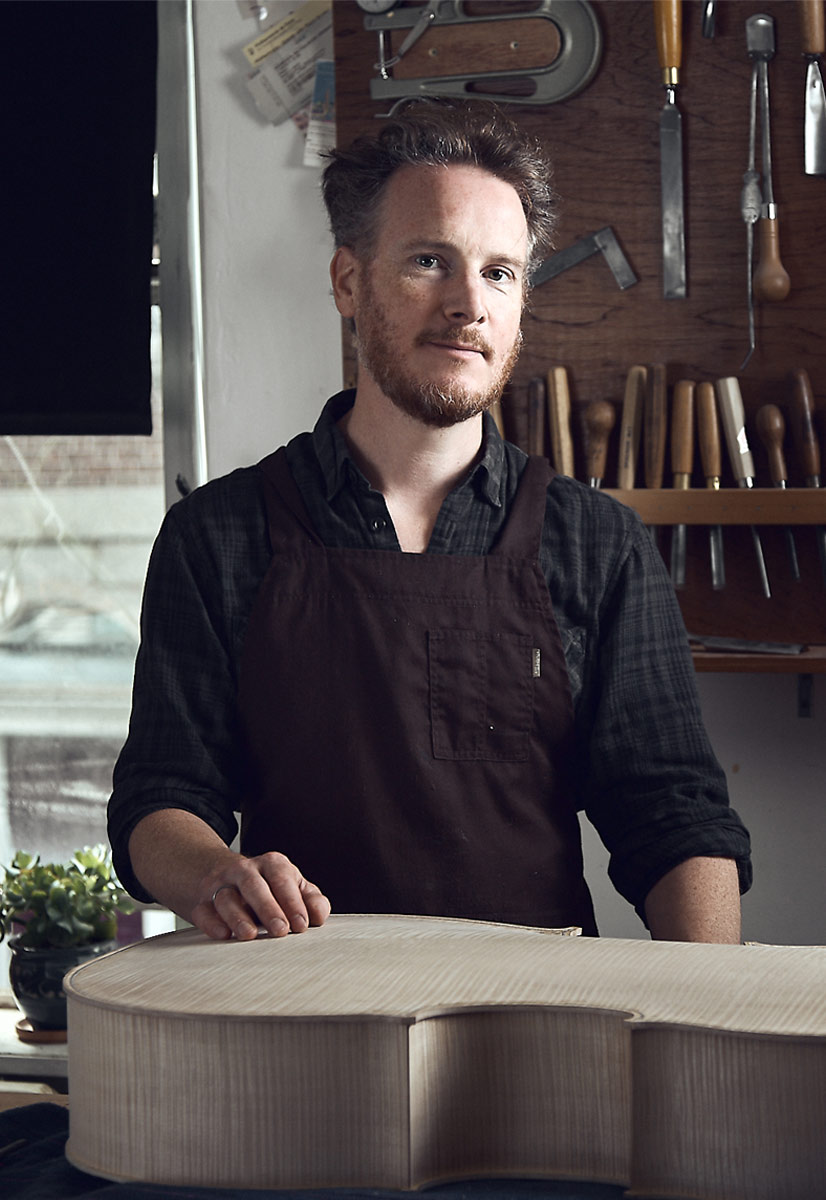
Frank Tate - Understated Luthier to the Stars
When Frank Tate relocated to Dublin from East Belfast almost thirty years ago, he found himself enveloped in the pulsating energy of a burgeoning artistic community. Settling into photographer Eamonn Doyle's former abode on Parnell Street, Tate quickly became enmeshed in the rhythm of Dublin's music scene, frequenting local haunts like the Welcome Inn and Thornbush pubs. It was amidst these spirited gatherings that Tate first encountered the enchanting strains of traditional music. One serendipitous evening, his gaze was ensnared by the intricate craftsmanship of a handmade mandolin, and with a few chords imparted by its owner, Tate embarked on a musical odyssey.
Tate's metamorphosis from a curious enthusiast to a virtuoso luthier is a narrative rich in dedication and artistry. Preferring to operate just below the surface, Tate has garnered admiration within musical circles, not only for his prowess as a musician in Colm Mac Con Iomaire's ensemble but also for his ability to fashion extraordinary instruments. Nestled within his unassuming workshop on Capel Street, Tate has fashioned instruments for luminaries such as Paul Simon, Ed Sheeran, and Donal Lunny.
Within Tate's workshop, bathed in the soft glow of a sizeable window overlooking Parnell Street, lies an array of bouzoukis and guitars, each imbued with its own story. Among his chosen materials is Brazilian mahogany salvaged from a Belfast shipyard, perhaps echoing the bygone era of the Titanic. This historic wood, meticulously shaped by Tate's skilled hands, yields instruments of unparalleled quality. Tate elucidates the maturation process of his creations, remarking, "They become remarkably responsive to that note. Truly exceptional guitars hardly require forceful playing. They resonate, seemingly attuned to the player's very voice. They come alive, pulsating with vibrations." A new guitar, he muses, "seems to find its own harmony."
In the 1990s, Tate's artistic journey led him to Mountjoy Square in Dublin, where his girlfriend maintained an artist's studio. It was there that he first attempted to craft a mandolin, an endeavour met with initial failure. However, an advertisement for a woodworking course in Glasgow beckoned, prompting Tate to venture to Scotland in pursuit of his craft. Under the tutelage of a master violinmaker and further refinement at Guildhall in London, Tate's fascination with baroque instruments blossomed, culminating in his distinctive sound ports, which imbue his acoustic instruments with an amplified resonance akin to an additional monitor for the player.
The sale of Tate's inaugural mandolin at a festival in Scotland marked a turning point in his career. Initially hesitant to part with his creation, he was reminded by his mentor that it was now his duty to share his craft with the world. Thus, he bid farewell to his creation, only to be reunited with it fifteen years later when it returned to his workshop in need of repair.
Frank Tate's remarkable trajectory and contributions to Dublin's musical tapestry have firmly established him as a maestro of his craft, crafting instruments that resonate with musicians on a profound level.
Check out more of Frank's Instruments HERE.

In every wood shaving and polished surface, Dublin's instrument makers are keeping the city's musical soul alive. Their workshops are not just places of business, but sanctuaries where the city's cultural heritage is preserved and passed on. In a world increasingly dominated by mass-produced instruments, these artisans remind us of the beauty of handcrafted music.
Next time you tap your foot to a jig or feel moved by a soulful Irish ballad, remember the craftsmen and women who are behind the scenes, keeping Dublin's musical heart




